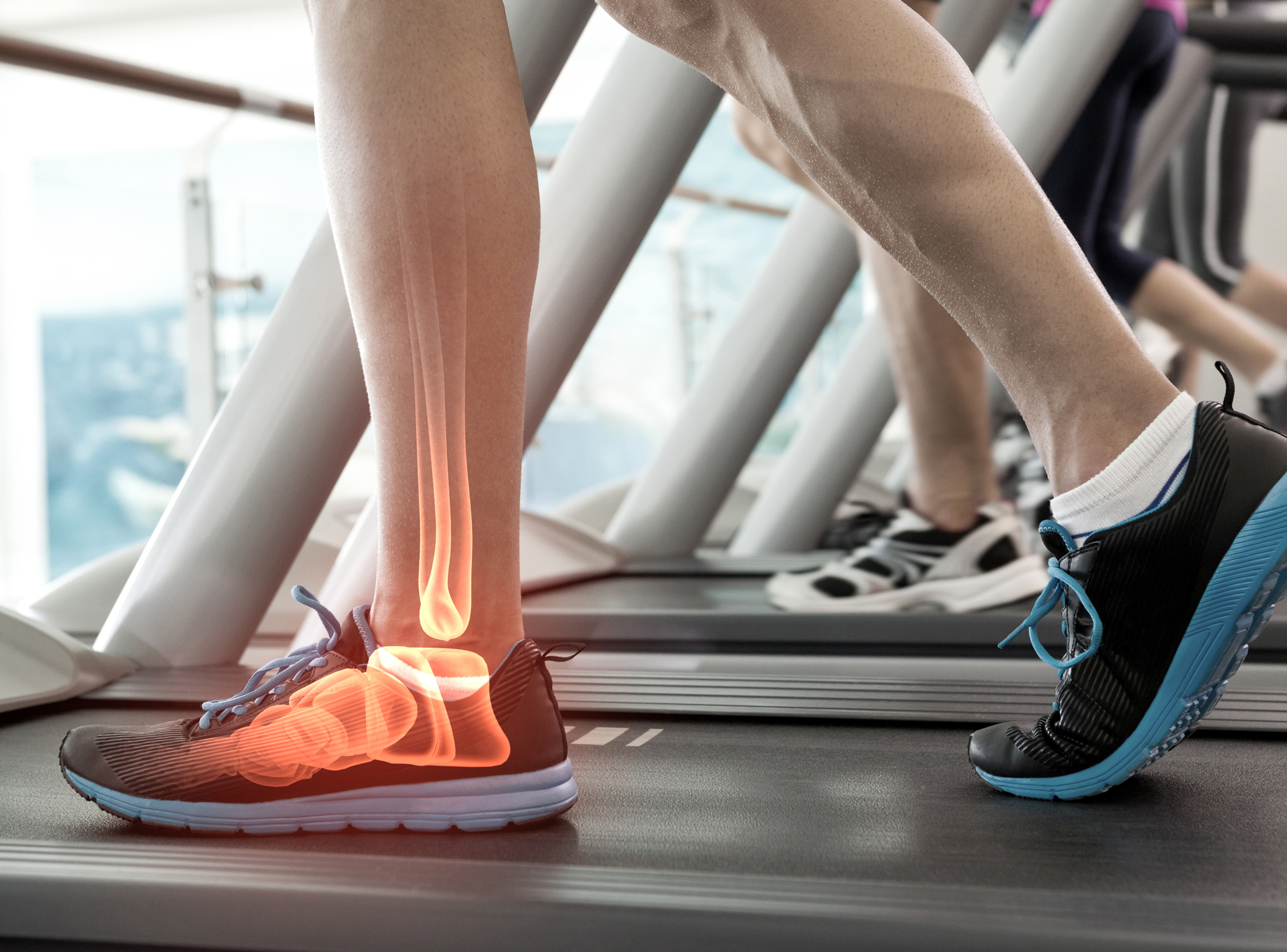Shin splints, also called medial tibial stress syndrome, occur due to excessive force on the muscles, joints, tendons and bones of the lower leg. If you have a shin splint, you’ll feel pain anywhere along the shin, from the knee to the ankle.
Shin splints are a common injury and not surprising they happen. When you’re running or walking especially on hard surfaces, you come down with more than twice the weight of your body. That’s a lot of pressure for your feet and lower legs to deal with. Your shins can become inflamed and sore, or if left untreated, can result in a stress fracture.
If you haven’t trained in a while and you’re back walking, jogging, dancing, hiking or doing any other high impact activity, it’s important to take even more care as we often see shin splints caused by a sudden onset of activity at our podiatry clinic.
Related article: The 10 most common foot problems we treat in our podiatry clinics
What increases the risk of a shin splint?
Shin splints are more common when:
- You are training on concrete or very hard flooring
- You haven’t trained for a while and are back to high impact activity
- Your shoes are not supporting your feet, and therefore are also not supporting your ankles and knees
- You’re walking/jogging uphill or downhill or uneven surfaces which places more stress on the shins
- You have flat feet which cause the shin muscles to work harder to keep the arch upright, leading to an ache.
Symptoms of a shin splint
If you have a shin splint, you might be experiencing some of the following symptoms:
- A dull ache is felt along the lower leg anywhere from the knee to the ankle
- This area is sore and tender to touch
- The pain increases during high impact exercise
- The skin along the shin is red, inflamed and swollen
Self-help at home – what you can do to relieve the pain of a shin splint
The RICE method is the first step to relieving shin splints at home.
- Rest – take a break from any activity until you get professional advice and a treatment plan to alleviate the pain
- Ice – apply ice to reduce inflammation and swelling in the shin
- Compression – wrap your lower leg with a bandage to contain the swelling
- Elevate – raise your lower leg to higher than your heart whenever you can
While you heal, you may be able to take up lower impact activities such as swimming. Anti-inflammatory medication from the chemist may also help you reduce the pain and swelling.
How to avoid shin splints from occurring
Taking a little extra care when doing any exercise will go a long way to minimise the risk or prevent shin splints from occurring:
- Avoid running on hard surfaces such as concrete altogether, it’s not worth the pain and injury it can cause. Choose grass ovals or other softer surfaces such as purpose built running tracks.
- Get yourself fitted with good quality sports shoes that have the right support and properly cushioned soles. We can help you with choosing the right footwear.
- Warm up – stretching your hamstrings and calf muscles will help to avoid shin pain
- Incorporate strengthening exercises for your lower legs into your exercise regime
- Manage your weight and take care not to add even more pressure on your shins with weight gain.
Related article – Recurring foot arch pain? Here are some possible reasons.
Make an appointment with Sanders Podiatry – Linden Park, Stirling or Mt Barker
If you have any pain in your shins, we recommend having this looked at sooner than later as shin splints can become a painful and chronic condition. At our podiatry clinic, we’ll asses your gait, look at the alignment of your feet and give you advice to help you prevent shin splints from happening while you’re doing the exercise you love.
Call in to make an appointment with our family friendly podiatrists at one of three locations around Adelaide.
Sander Podiatry Adelaide – 08 8379 1456 (Greenhill Podiatry)
